How to Outsmart Deer and Finally Enjoy Your Garden
I’ve been designing and tending to gardens for what feels like a lifetime, mostly in spots where deer are basically nosy, four-legged neighbors. I’ll never forget one of my first big projects. The homeowner had invested a small fortune in a breathtaking garden, packed with lush hostas and vibrant tulips. A week later, my phone rang. She was devastated. The local deer herd had mowed it all down to sad little nubs overnight. Oof.
In this article
It was a tough pill to swallow, but it hammered home a lesson I live by now: it’s way smarter to work with nature than to try and fight it. Building a garden that deer just walk right past isn’t about finding one miracle plant. It’s about getting inside a deer’s head and creating a landscape that they find totally unappetizing.
But before we get into the good stuff, let’s get one thing straight. There’s no such thing as a “deer-proof” plant. I’ve seen deer in a tough, snowy winter chow down on thorny roses and even prickly junipers when they were desperate enough. Our goal is to create a “deer-resistant” garden. We’re essentially making our yard the least appealing restaurant on the block, so they wander over to the neighbor’s all-you-can-eat buffet instead. Everything I’m about to share is based on years of real-world trial and error—this is the stuff that actually works.
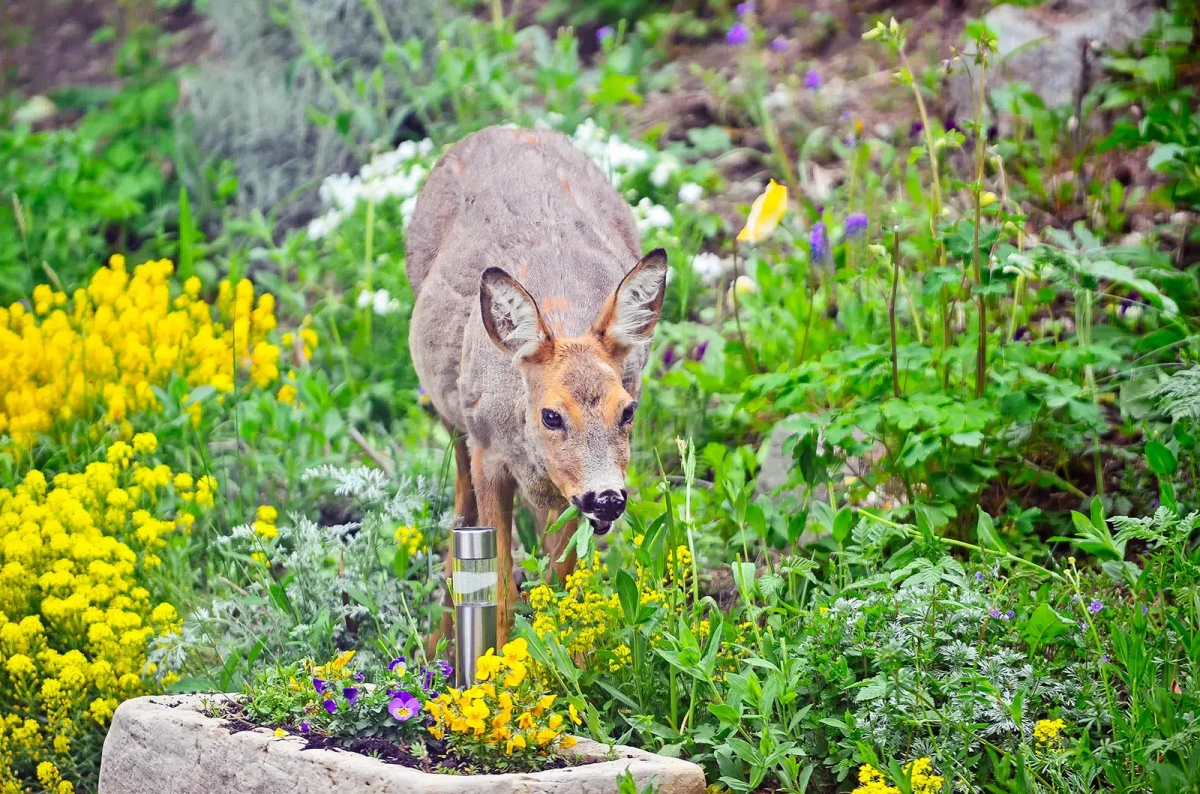
So, How Do Deer Pick Their Dinner?
To outsmart a deer, you gotta understand what makes them tick. They aren’t trying to ruin your day; they’re just hungry. Their choices really boil down to a few simple things.
It’s All About Smell and Texture
A deer’s number one tool for finding food is its nose, and it’s incredibly powerful. This is our secret weapon. Plants with really strong, fragrant oils are often a huge turn-off for them. Think about the potent punch of rosemary, the sharp scent of mint, or the floral wave of lavender. To us, they smell amazing. To a deer, they’re overwhelming and might signal a plant that’s poisonous or just plain hard to digest.
Texture is another big one. Deer have surprisingly sensitive mouths and prefer their food soft and tender, like fresh spring growth. This is why they hate anything with fuzzy or hairy leaves, like Lamb’s Ear. It just feels wrong in their mouths. By the same token, plants with tough, leathery, or waxy leaves are a hassle to chew. And of course, anything spiny or thorny is a pretty obvious deterrent. They might take one curious bite, but they won’t stick around for a full meal if it hurts.
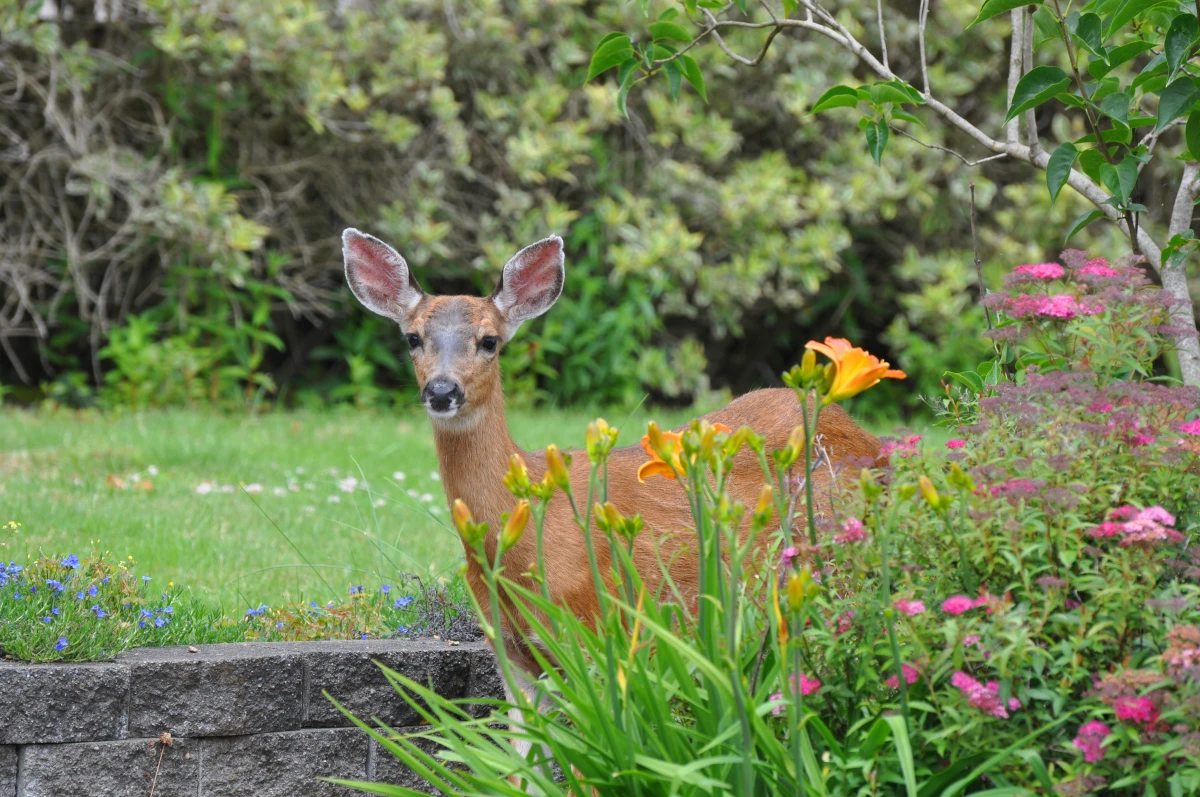
Nature’s Built-In Warning Signs
Honestly, some of the best deer-resistant plants are the ones that are straight-up toxic. Generations of deer have learned to leave these alone. Daffodils, for instance, have an alkaloid in them that’s poisonous to most mammals. Foxglove is another classic example, containing a powerful heart stimulant. Deer just seem to know better.
Heads up! This is a super important safety point. If a plant is toxic to deer, it’s very often toxic to pets and people, too. Always be mindful of this, especially if you have curious kids or pets running around.
The Core Game Plan for a Deer-Free Zone
A successful garden strategy is more than just a shopping list of plants. It’s about using layers and a little bit of clever deception. This is the approach that has saved my clients’ gardens time and time again, even in areas with heavy deer traffic.
Principle 1: Layer Your Defenses
Think about your yard in zones. The outermost ring, furthest from your house, should be your fortress. This is where you plant your most hardcore, deer-repelling plants. I’m talking about things with strong smells and textures, like rows of Russian sage, big ornamental grasses, or tough junipers. Try to make this defensive border at least 4-5 feet wide to create a real barrier of scent and texture that deer have to cross.
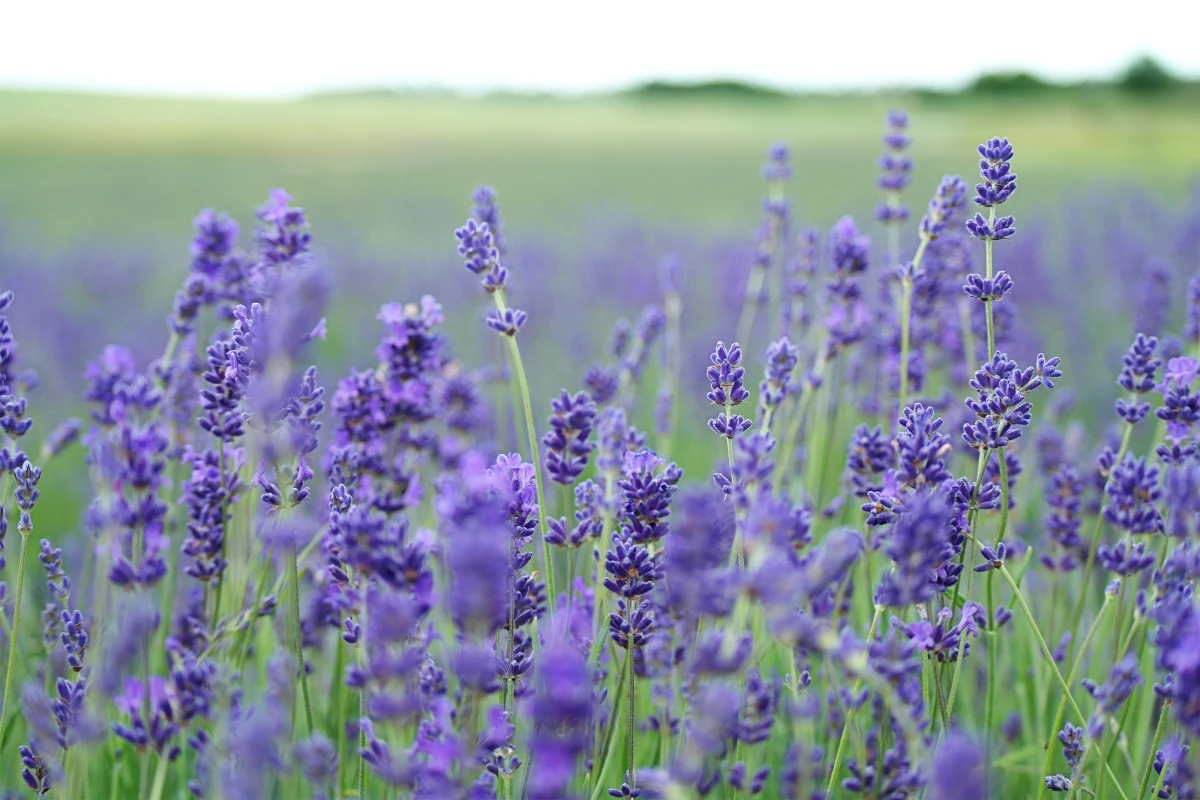
As you move closer to your house or patio, you can start using plants that are a little more tempting. Deer are naturally more skittish about approaching human activity, so these inner zones are safer. This is where I might put Coneflowers or Peonies. And for your absolute most prized, can’t-bear-to-lose-them plants? Put them in pots right on your deck or back porch. The deer are very unlikely to step right up to your door for a snack.
Principle 2: Confuse Their Noses
Interplanting is an old-school trick that works wonders. It just means mixing stinky plants in with tasty ones. So instead of planting a big, obvious block of tulips (a deer favorite), mix them in with a border of daffodils or ornamental alliums. The strong oniony smell of the alliums helps to hide the delicious scent of the tulips. I often tuck herbs like creeping thyme and oregano around the base of roses for this very reason. It creates a confusing cloud of smells that makes it hard for a deer to zero in on its target.
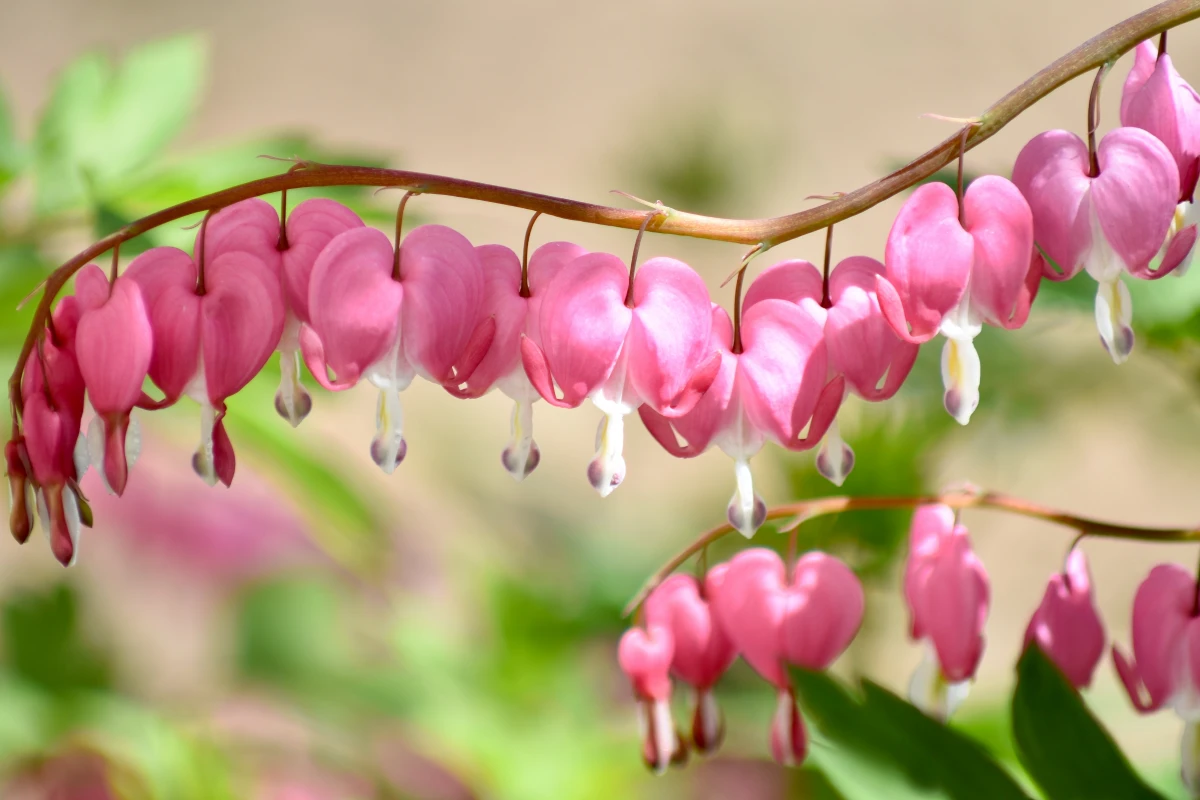
A lesser-known trick: The Irish Spring soap method. Seriously. Some old-timers swear by it. Just grab a bar of the original green soap, drill a hole through it, and hang it from a branch near a plant the deer have been bugging. It’s a cheap, easy way to add a confusing scent to a specific spot.
Principle 3: Protect the Youngsters
Even a super-tough, deer-resistant plant is vulnerable when it’s young. New growth is tender and doesn’t have the same concentration of those nasty-tasting compounds. Whenever I put in a new landscape, I always protect the young shrubs and trees for the first year or two. This is non-negotiable for success.
It’s easy to do. You can create a simple cage to protect a new shrub. Here’s a quick guide:
- Materials You’ll Need: Four sturdy garden stakes (wood or metal), about 3-4 feet of chicken wire or hardware cloth, and some zip ties or wire. You can get all this at a big box store like Home Depot for under $20.
- Step 1: Drive the four stakes into the ground in a square around the base of your young plant, leaving a few inches of space around the foliage.
- Step 2: Wrap the chicken wire around the outside of the stakes to form a protective cylinder.
- Step 3: Secure the wire to the stakes with your zip ties. That’s it! This simple cage will keep the deer from nibbling while your plant gets established.
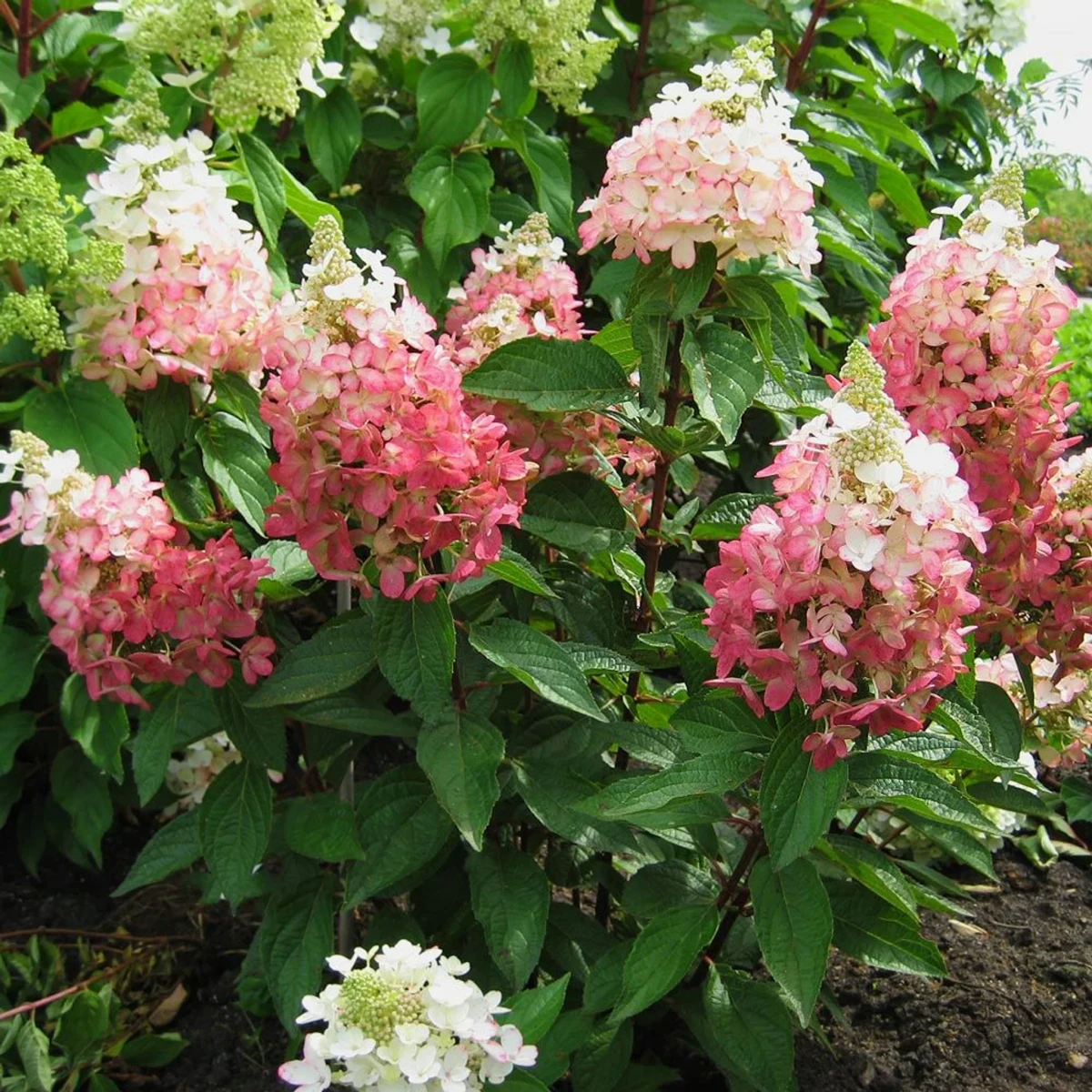
A Beginner’s Deer-Resistant Garden Bed Recipe
Feeling overwhelmed? I get it. Here’s a super simple, can’t-mess-it-up recipe for one sunny garden bed that deer will hate.
The Layout: Think in simple rows. Tallest plants in the back, medium in the middle, and a short border in the front.
Your Shopping List:
- Back Row (the tall one): 1 Russian Sage. It’s got that silvery foliage and a strong scent.
- Middle Row (the color): 3 Coneflowers (Echinacea). Their prickly cones and coarse leaves are a great texture deterrent.
- Front Border (the texture): 3 Lamb’s Ear plants. The fuzzy leaves are the star here.
Quick Budget Tip: When you’re at the nursery, you’ll see plants in different-sized pots. A smaller quart-sized perennial might cost you between $8 and $15. A larger one-gallon pot will probably be in the $20 to $40 range. The gallon pot gives you a bigger plant right away, but if you’re on a budget, starting with quarts is perfectly fine—they’ll catch up!
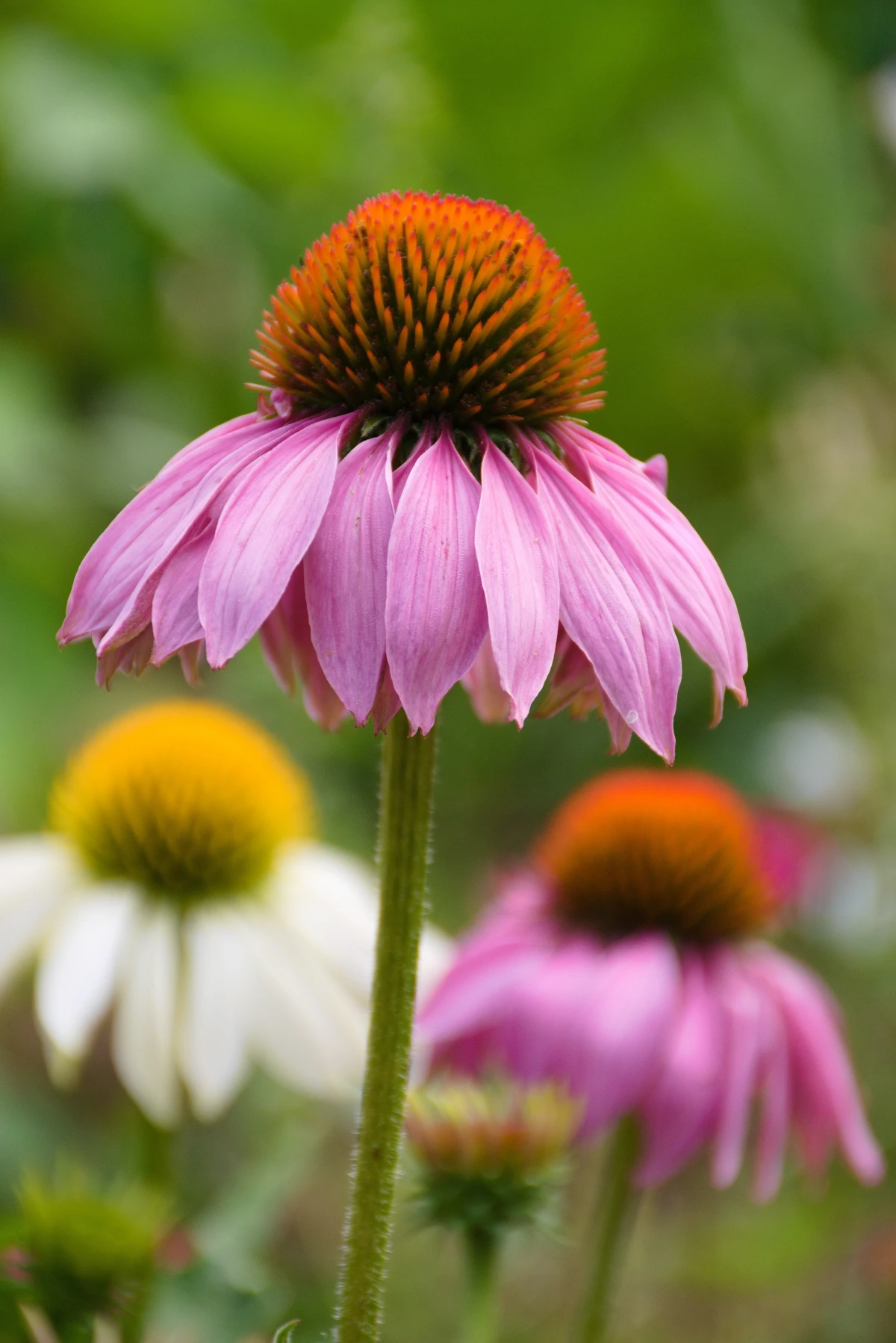
My Go-To Plant List: Selections That Actually Work
Here are some of the plants I lean on again and again. They’re reliable, and I’ve included a few notes from my own experience with them.
Perennials: The Foundation of Your Garden
Bleeding Heart: A shade garden classic that deer won’t touch because it’s toxic. It’s gorgeous in the spring but tends to disappear in the summer heat, so I like to plant it with ferns or thick-leaved hostas to fill the gap. All parts are toxic if eaten, so wear gloves when you handle it.
Coneflower: A sun-loving powerhouse. The mature flower cones are prickly, and the leaves are coarse. Deer might nibble a brand-new leaf but they leave established plants alone. Plus, they’re a magnet for bees and butterflies! Leave the seed heads up in the winter for the goldfinches.
Foxglove: Adds amazing height and drama to the garden. It’s highly toxic, so deer avoid it like the plague. Major safety warning: This plant is extremely poisonous to people and pets. I only use it in gardens where there are no small children or curious animals present. It’s beautiful, but you have to respect it.
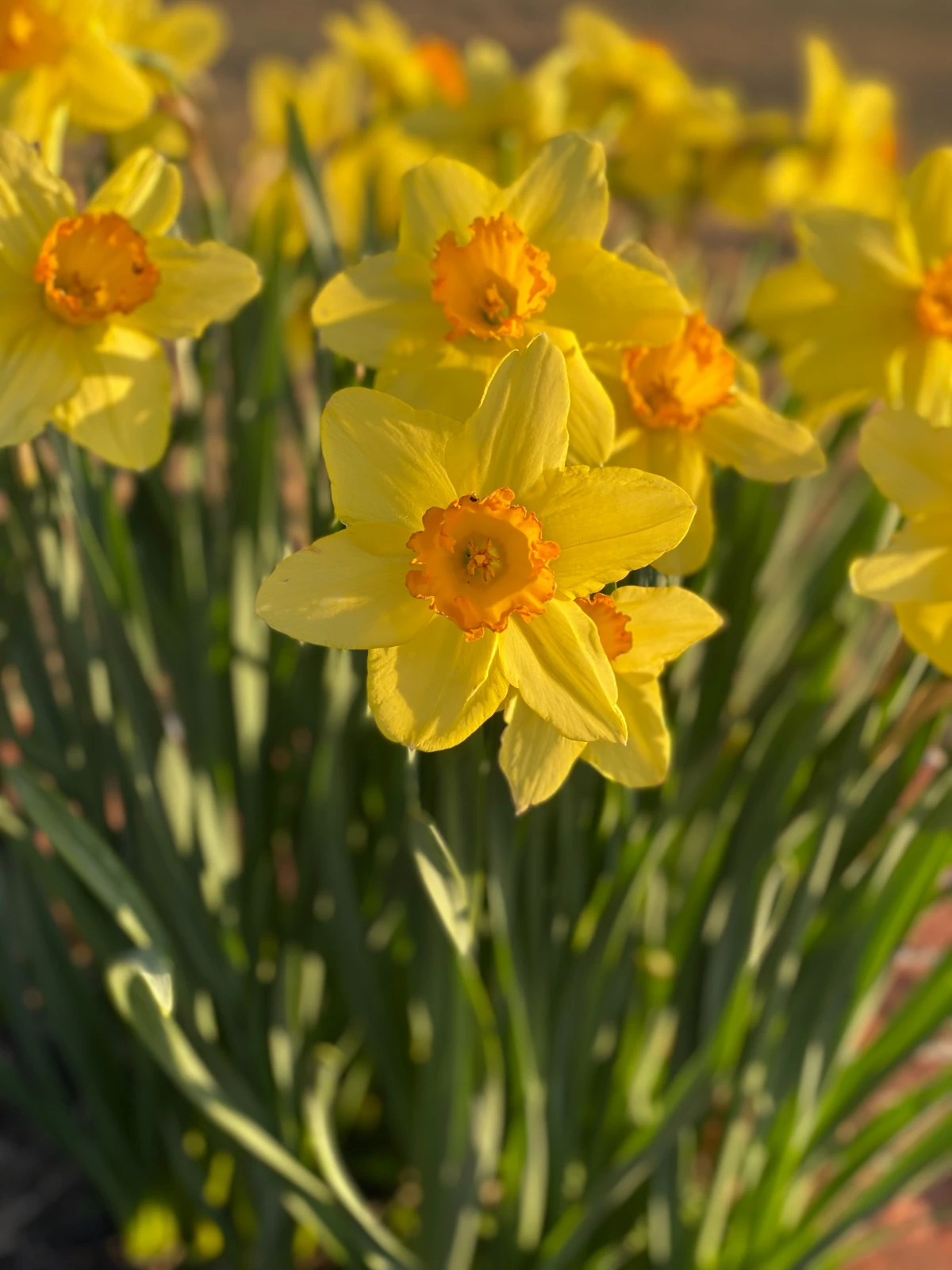
Lamb’s Ear: The reason deer avoid it is right in the name. The leaves are covered in soft, silvery fuzz that feels unpleasant in their mouths. It’s a fantastic, touchable groundcover for hot, sunny, and dry spots.
Russian Sage: This plant is a workhorse. It has a strong, medicinal, sage-like smell that deer find offensive. It blooms for months in the summer and loves the heat. Pro tip: Prune it back hard in the early spring, down to about 6 inches, to encourage a full, sturdy shape.
Shrubs: The Bones of Your Landscape
Boxwood: A landscape staple for a reason. Boxwoods have a sharp scent and contain a toxic alkaloid. They are the definition of a reliable, deer-resistant shrub for creating hedges and structure. A great long-term, low-maintenance investment.
Butterfly Bush: The fuzzy leaves and bitter taste mean deer pass it by, but butterflies go wild for the flowers. A quick heads-up: In some areas, this plant can be invasive. I always recommend planting sterile varieties, which don’t produce seeds. Just search for ‘sterile butterfly bush’ or check with your local garden center to be a responsible gardener.
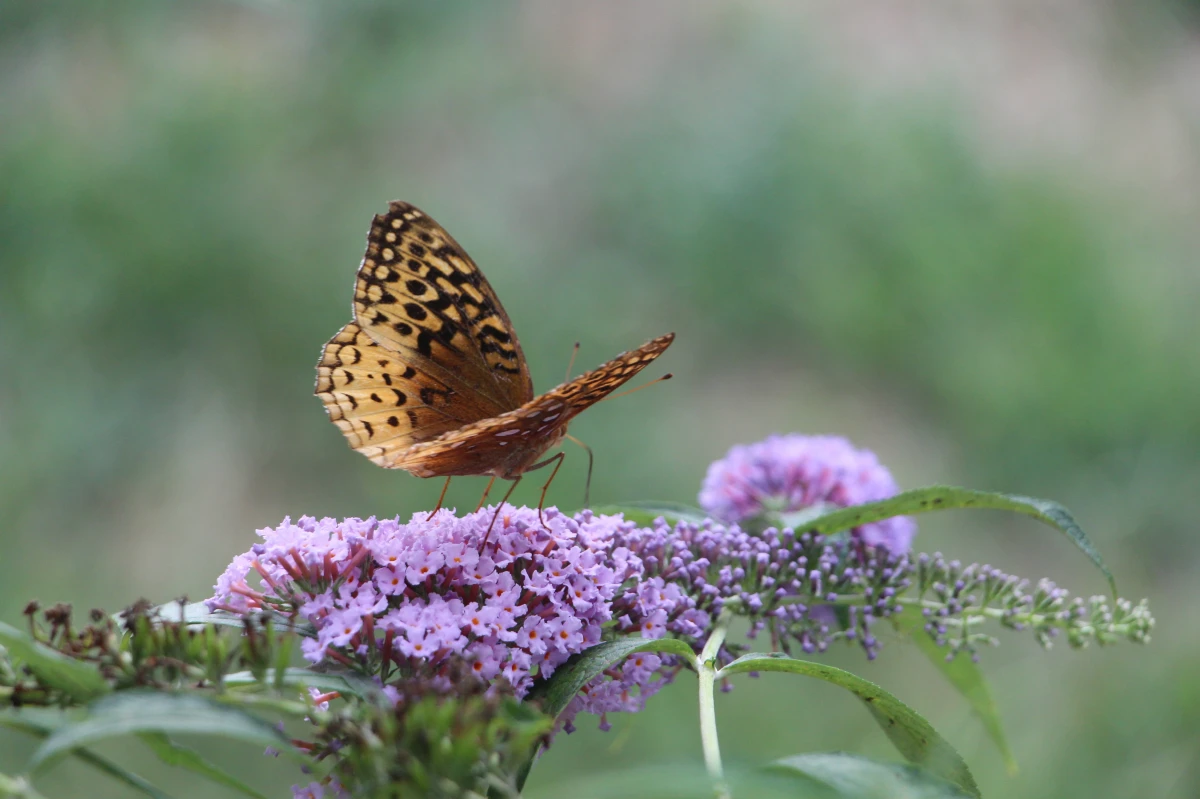
Panicle Hydrangea: This is THE hydrangea to get if you have deer. Unlike their smooth-leaved cousins, these have rough, sandpapery leaves and tough stems. Even if a deer gets brave, these shrubs are so vigorous they bounce right back. They also bloom on new growth, so you’re guaranteed flowers every year.
Bulbs: The Easiest Spring Color
Daffodil: If you can only plant one bulb, make it the daffodil. Every part of the plant is toxic to deer, squirrels, and rabbits. They’re the definition of plant-it-and-forget-it, and they multiply over the years.
Ornamental Allium: These are basically giant, beautiful onions. Their strong, garlicky scent is a huge deterrent. They look absolutely stunning floating above other perennials in late spring. A little trick: plant them among other leafy plants to hide their foliage, which tends to get a bit yellow and floppy as the flowers emerge.
Annuals: A Pop of Summer-Long Color
Don’t forget about annuals! They’re perfect for filling in gaps and providing non-stop color. Many have textures and smells that deer hate.
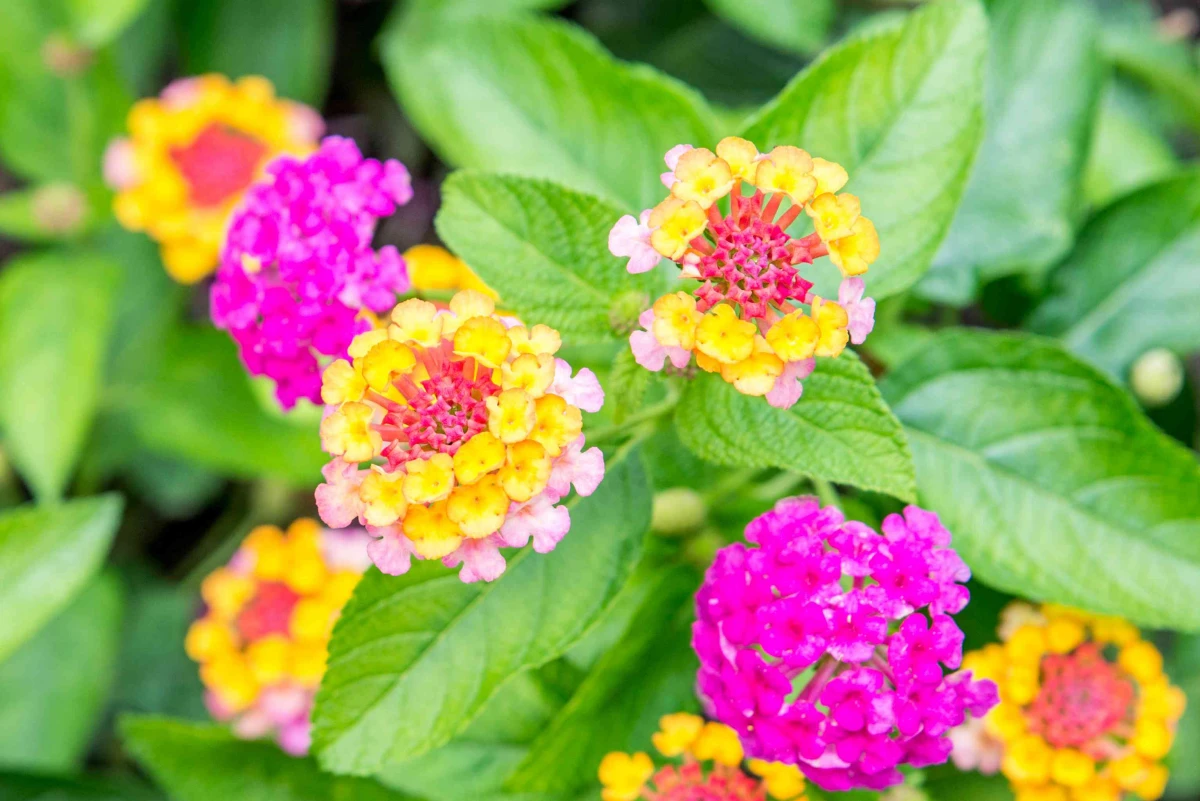
Marigolds: It’s that classic, pungent smell. Deer can’t stand it. They make a fantastic, colorful border around vegetable gardens or any other tasty plants you want to protect.
Ageratum (Floss Flower): These have fuzzy flowers and slightly fuzzy leaves, giving them a texture that deer tend to avoid. They come in beautiful shades of blue, purple, and white.
Angelonia (Summer Snapdragon): These have a slightly resinous, grape-soda-like scent to their foliage that isn’t a deer favorite. Plus, they thrive in heat and humidity when other annuals might fizzle out.
Beyond Plants: Choosing Your Battle
Sometimes, especially with a large deer population, you need more than just smart planting. You have to decide how much time, money, and effort you’re willing to put in.
Repellents: Commercial sprays can work, but you have to be persistent. The most effective ones are usually egg-based, which smells like a predator to deer. You have to reapply them every few weeks and always after a heavy rain. Want to make your own? Here’s my go-to stink spray: Blend 2 raw eggs, 4 cloves of garlic, and 1 teaspoon of dish soap into a gallon of water. Let it sit outside for a day to get extra ripe, then put it in a sprayer. It smells awful, but it works.
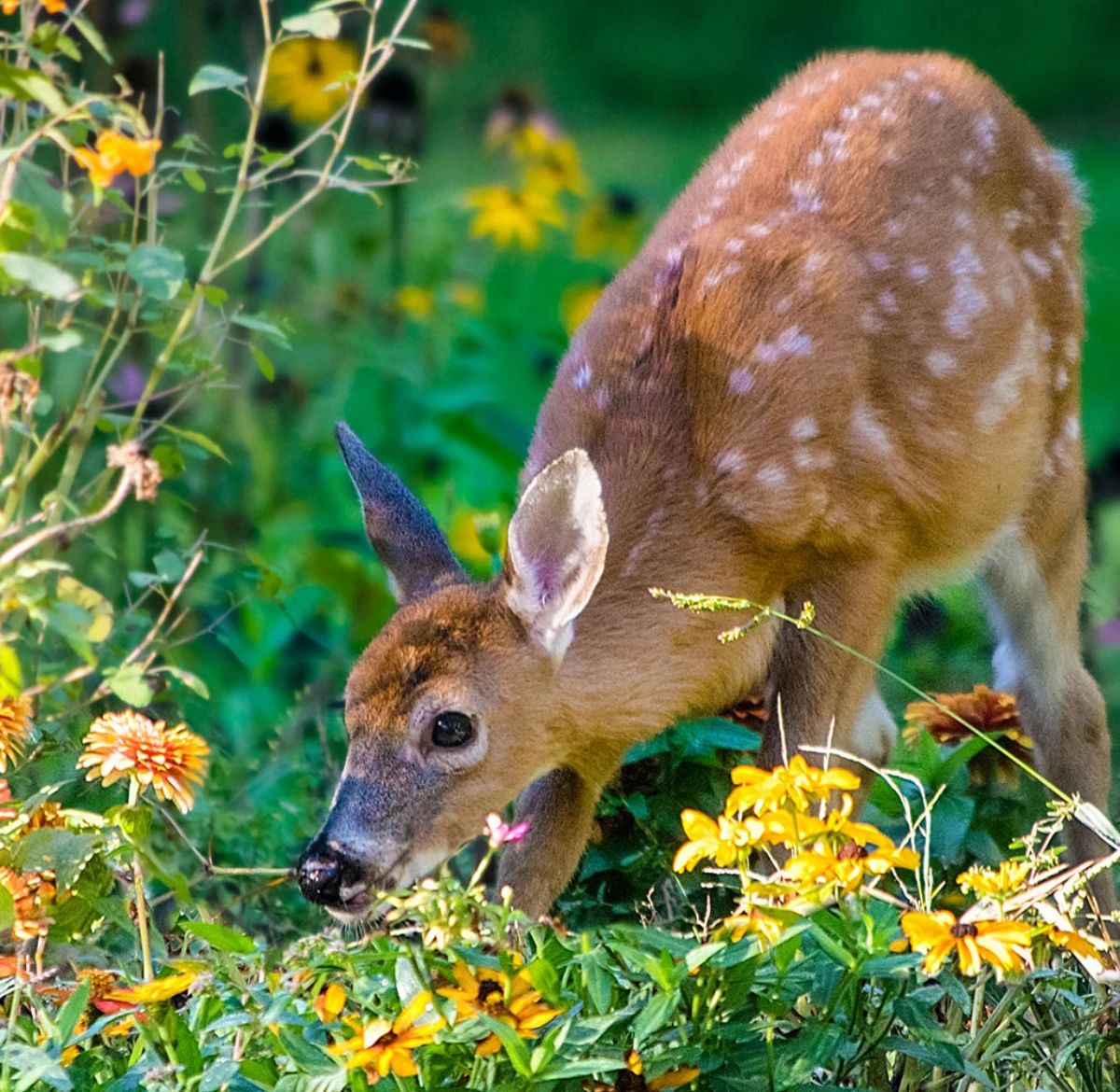
Fencing: This is the only 100% guaranteed solution, but it’s a big step. To be truly effective, a fence for white-tailed deer needs to be at least 8 feet high. Anything lower, and they might just hop it. Fencing is a serious investment in both looks and cost. Depending on the material and who installs it, you should be prepared for costs anywhere from $25 to over $50 per linear foot. It’s the most effective option, but also the most expensive.
So, what’s the right choice? If you have low to moderate deer pressure, a smart combination of deer-resistant plants and occasional repellents is usually enough. If you have a prized vegetable garden or live in an area with a massive deer herd, investing in an 8-foot fence might be the only way to garden in peace.
A Final Word from the Field
One last thing I’ve learned the hard way: don’t get complacent in the winter. When there’s a foot of snow on the ground, deer get desperate and will eat things they’d never touch in July. I always wrap my vulnerable evergreen shrubs like Arborvitae in burlap for the winter or give them a good spray with a repellent in late fall.
And remember, just because a plant tag says it’s “deer-resistant” doesn’t make it a golden ticket. A very hungry deer will try almost anything once. The key is to use these plants as part of a larger strategy—layering, confusing scents, and protecting young plants—to convince them that your garden just isn’t worth the effort. You can do this!










